Russian army against light drones
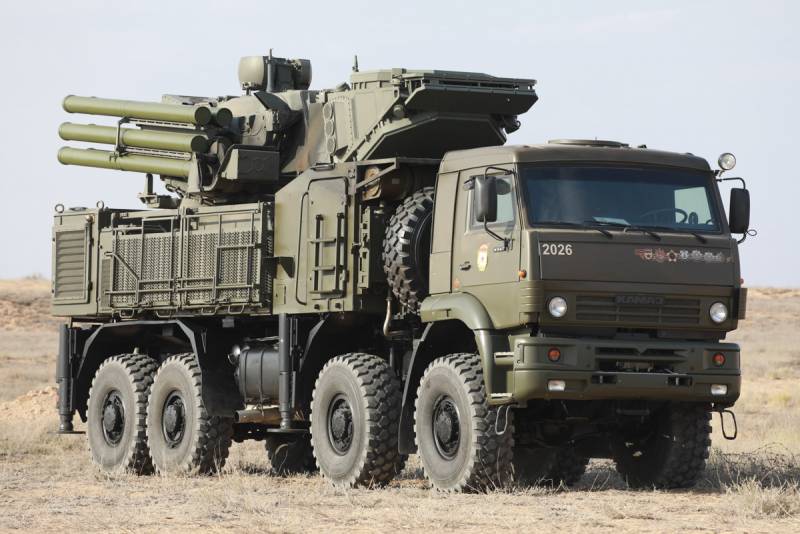
Pantsir-S1 is an effective anti-UAV weapon with ambiguous economic indicators. Photo of the Ministry of Defense of the Russian Federation
A modern developed army must be able to defend itself against enemy unmanned aerial vehicles of all classes. For this purpose, new systems of weapons and other equipment are being developed with different operating principles. The tactics of using such novelties and well-known samples are also being formed. The most successful and effective developments and ideas are mastered by the Russian army and are regularly tested at various exercises.
Light threat
The conflicts of recent years, as well as various research and training activities, show that light and compact UAVs of aircraft and helicopter types pose the greatest danger to the army. Such products can carry out patrolling and reconnaissance, incl. for organizing strikes with full-fledged firepower.
A light drone can itself be a carrier of weapons, even if they are light and low-power. At the same time, the lack of power of a separate ammunition can be compensated for by the massive use of shock UAVs. The organization of such a raid will be facilitated by the simplicity and low cost of unmanned vehicles, commercial or even artisanal.
The fight against such an air threat with traditional air defense systems is difficult. Small-sized UAVs with a minimum of metal parts are difficult to detect with a radar designed for full-size aircraft. Defeat drone is also associated with problems: an anti-aircraft missile is redundant for such a purpose, and the use of receiver systems reduces the possible interception range.
In this regard, the search for alternative air defense methods based on other methods and complexes continues for a long time. The direction of specialized means of electronic intelligence and electronic warfare is developing, specialized anti-aircraft systems are being developed, etc. The possibility of using available systems and tools in a new role is also being considered.
Based on the results of tests and other activities, changes are made to the organizational and staff structure, new tactics and samples are adopted. At the same time, the Ministry of Defense does not give preference to any particular direction and applies an integrated approach. Its positive aspects can be observed right now.
In the process of study
An integrated approach to defense against complex unmanned systems has been repeatedly demonstrated in recent exercises. For example, great attention was paid to these issues during the joint maneuvers "West-2021". Even more interesting and revealing news arrived a few days ago from the coastal troops of the Caspian flotilla.
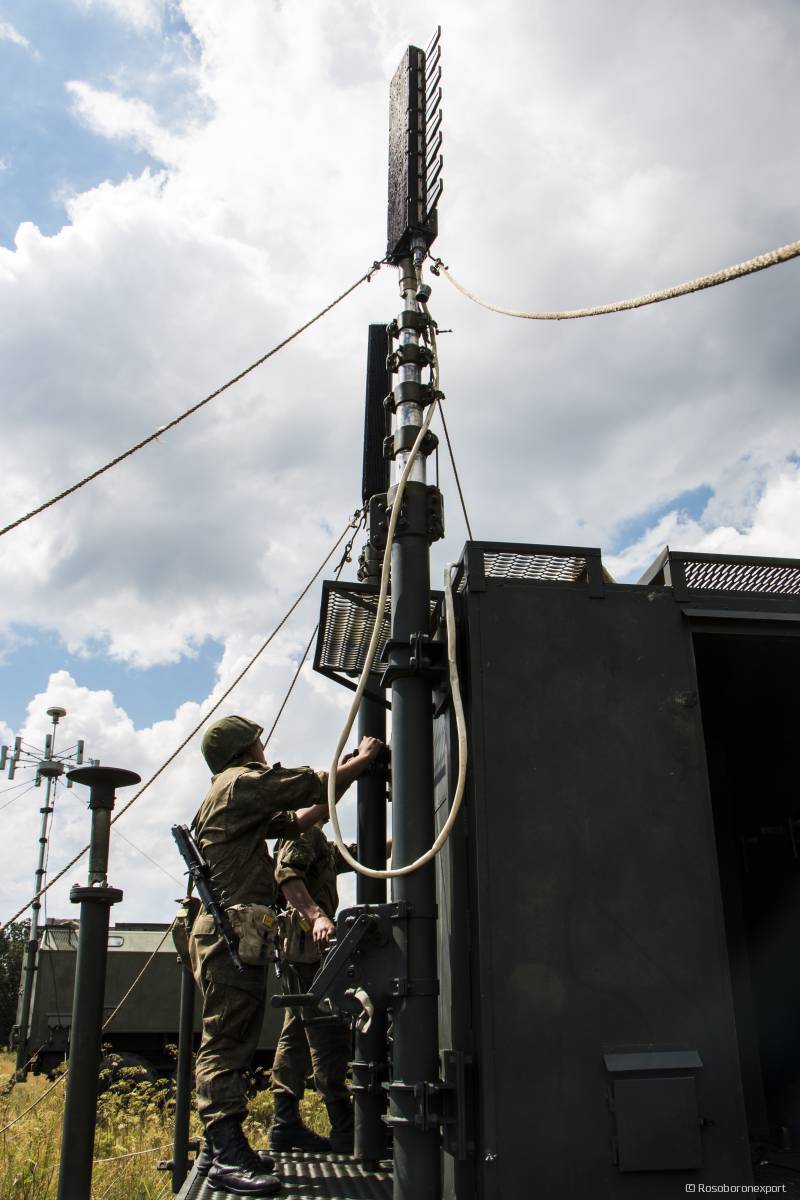
"Resident" in the process of deployment. Photo by Rosoboronexport
On September 21, the press service of the Ministry of Defense announced the planned tactical exercise of the Marine Corps KFL with the involvement of 500 troops and 200 units. technology, one of the goals of which will be to practice the fight against UAVs. For the first time, mobile anti-drones units have been included in the battalion tactical group of the KFL. RTR and EW specialists were supposed to provide search, target designation and suppression of detected targets.
In addition, according to the plan of the exercises, duty groups of snipers are involved in the fight against UAVs, who will have to hit air targets in the range. Part of the training targets will hit the crews of portable anti-aircraft systems from the air defense groups.
It should be noted that such exercises are not isolated. Over the past few years, news has been regularly received about various events involving tactical groups to combat UAVs. Other units are also involved in such exercises, primarily air defense batteries.
Specialized units
In response to the current threat, several years ago, mobile electronic warfare groups began to be formed in the formations of the armed forces, primarily in the ground forces. Such a unit receives modern self-propelled electronic means and must accompany the troops on the march and in positions.
The news about West-2021 and the KFL exercises mentions the use of electronic warfare systems of modern types - Borisoglebsk-1/2, Zhitel and R-934BMV. During the maneuvers, the mobile groups moved to the assigned positions and ensured the fight against the UAV of the simulated enemy. Independently and by external target designation, they detected airborne objects, then identified control channels and suppressed them with the help of interference.
According to known data, the R-330Zh "Zhitel" complex is designed to suppress signals from navigation satellites, and "Borisoglebsk" of both versions can operate in a wide frequency range and solve an extended range of tasks. The combined use of these two complexes, as practice has repeatedly confirmed, makes it possible to disrupt the communication of the UAV with the operator's console and disrupt the transmission of commands, telemetry and video signals. Autonomous operation of the drone due to loss of navigation is also excluded.
It is also not the first year that exercises have been conducted with the involvement of snipers. As practice has shown, the correct organization of combat work allows you to use it as an anti-aircraft weapons even sniper rifles. A trained soldier with an SVD or ASVK rifle is capable of hitting a small-sized mobile and maneuvering air target at distances up to 1-1,5 km and altitudes up to 300-400 m.
Traditional approach
It should be noted that in the fight against UAVs of all classes, "traditional" means of electronic warfare and air defense are also quite actively used. Moreover, unlike mobile and sniper groups, such a defense not only went through exercises, but also has real combat experience.
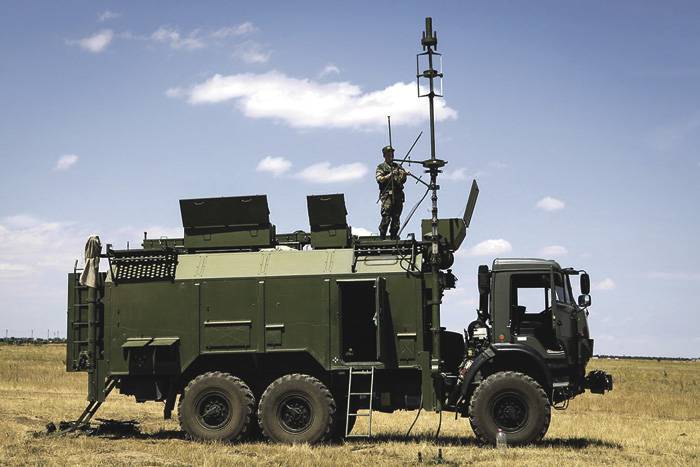
R-934BMV jamming station. Photo of the Ministry of Defense of the Russian Federation
2015-16 terrorist organizations have repeatedly tried to attack the Khmeimim airbase using various UAVs. Russian electronic warfare systems and anti-aircraft systems successfully repelled raids. Jamming stations suppressed control channels and disrupted autonomous flight, and the few devices that managed to maintain the direction of flight were hit by missiles and cannons of the Pantsir-C1 and Tor systems.
The existing defense system has repeatedly confirmed its potential and high efficiency when working on small-sized commercial and homemade UAVs. It should be taken into account that the cost of the spent ammunition several times exceeded the price of the downed vehicles, but due to this, even greater damage was prevented.
Development continues
Lightweight and compact UAVs are difficult targets for detection and destruction, but they cannot be considered invulnerable. There are many methods and means of timely detection and destruction of such targets, and most often it is not about their overall effectiveness, but about the appropriateness of their application in specific conditions.
Our army already has a number of models of equipment and systems designed specifically to combat UAVs. Also, specialized units with special equipment are being created. At the same time, already existing forces and means are involved in the fight against drones. These tasks are entrusted to radar and anti-aircraft complexes, and more recently to snipers.
Thus, the development of means of countering and destroying UAVs does not stop, and new samples are regularly demonstrated. A significant part of them, after the necessary checks and other procedures, enter service and are sent to the troops. Sometimes such processes are delayed, but in general the situation is conducive to optimism. The threat of light UAVs remains and even grows, and the Russian army is always ready to respond to it.
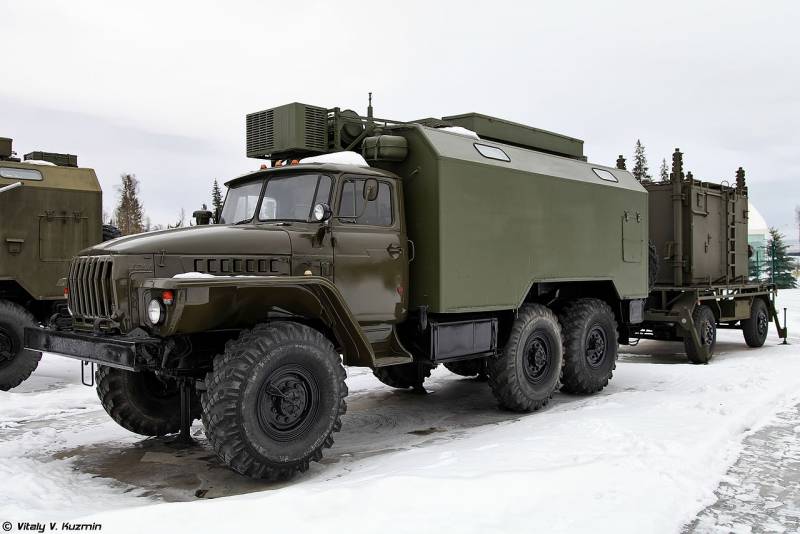
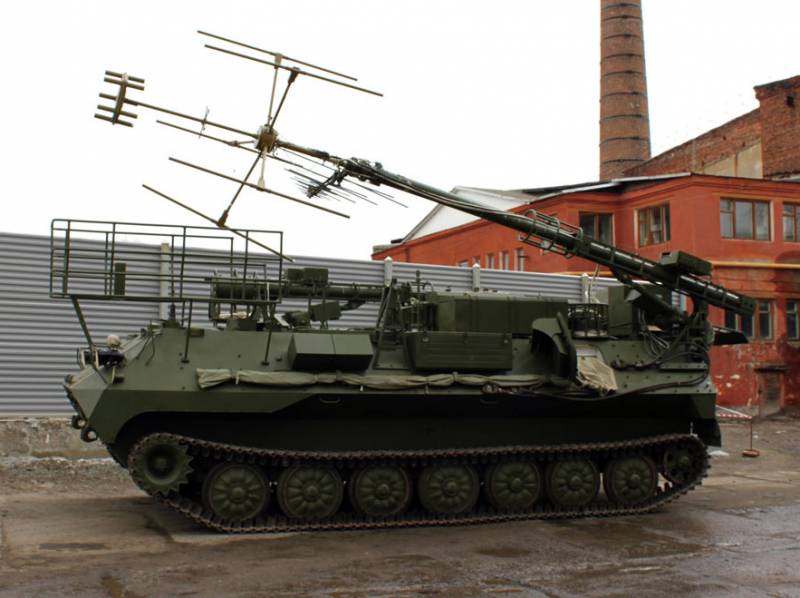
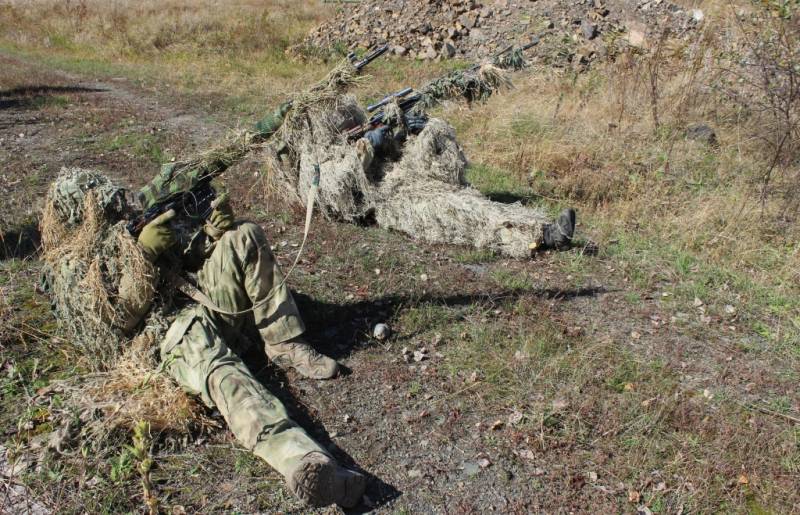
Information